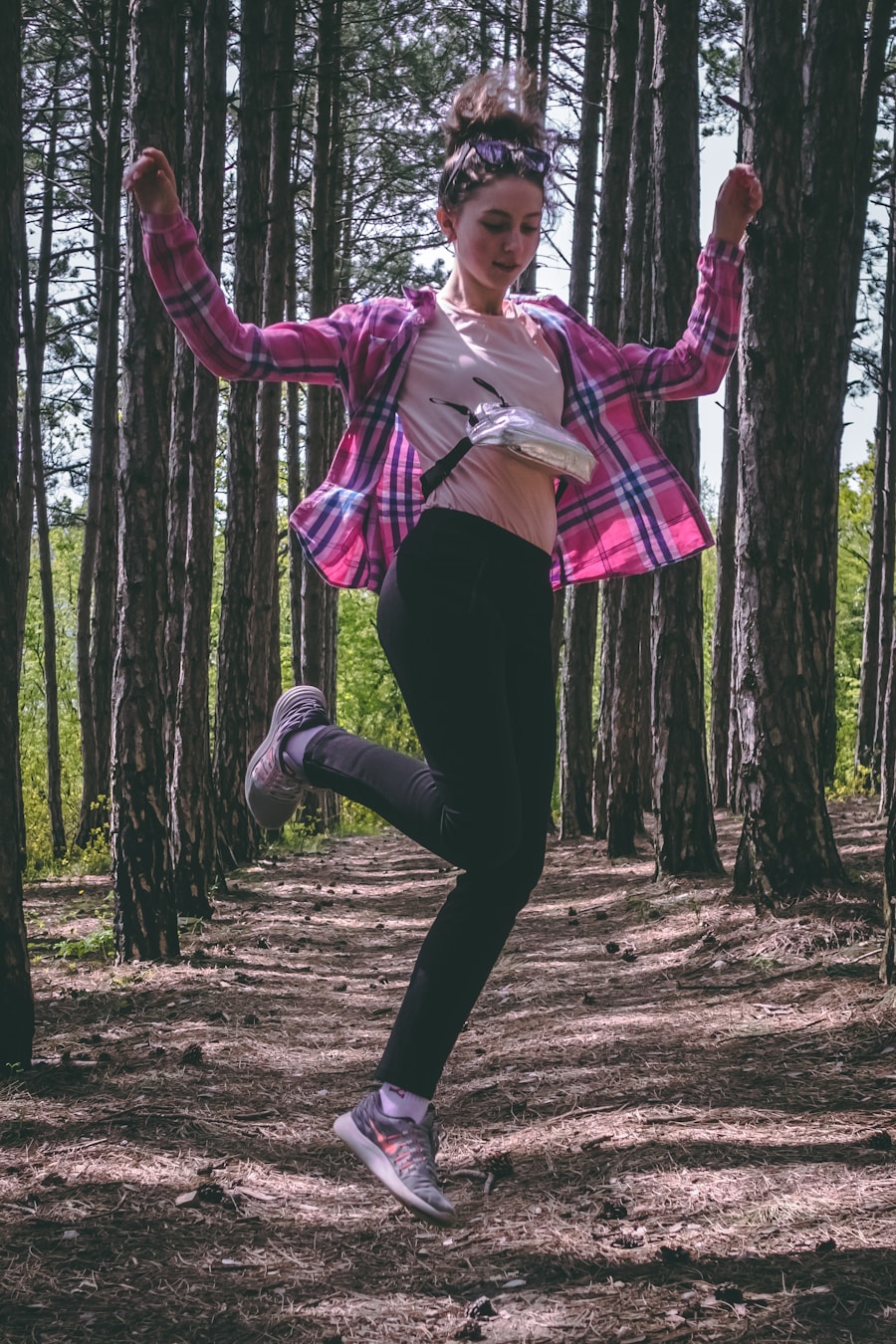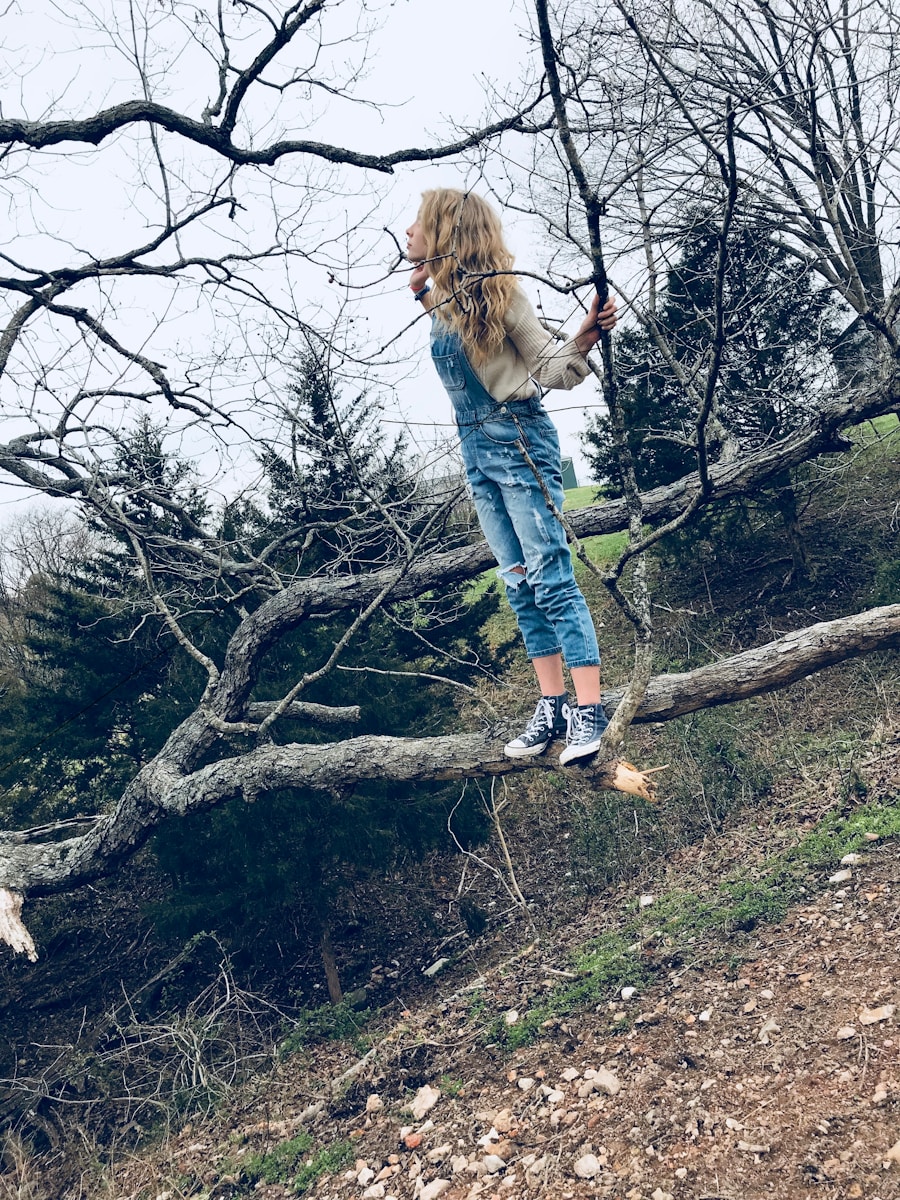Hiking is a beloved outdoor activity that allows individuals to connect with nature, explore new terrains, and enjoy physical exercise. While many outdoor enthusiasts have their preferred gear, a common question arises: can you hike in jeans? This seemingly simple inquiry opens up a broader discussion about the suitability of denim for outdoor adventures.
Jeans, a staple in many wardrobes, are often chosen for their durability and style. However, the practicality of wearing them on a hike can vary significantly based on several factors, including the terrain, weather conditions, and personal comfort. The history of jeans dates back to the 19th century when they were designed as durable workwear for miners and laborers.
Their rugged construction has made them a popular choice for casual wear, but this does not necessarily translate to optimal performance in hiking scenarios. As outdoor gear has evolved, specialized fabrics and designs have emerged to enhance comfort and functionality during physical activities. Nevertheless, many hikers still opt for jeans, either out of habit or preference.
Understanding the implications of this choice is essential for anyone considering hitting the trails in denim.
Key Takeaways
- Hiking in jeans can be a comfortable and convenient option for casual hikers.
- Pros of hiking in jeans include durability, pocket storage, and protection from elements.
- When choosing jeans for hiking, consider factors such as material, fit, and flexibility.
- Tips for hiking in jeans include wearing moisture-wicking undergarments and choosing a relaxed fit.
- Alternatives to jeans for hiking include hiking pants, leggings, and convertible pants for versatility.
Pros and Cons of Hiking in Jeans
Durability and Versatility
One of the primary benefits of wearing jeans while hiking is their durability. Denim is a robust fabric that can withstand abrasions and rough terrain better than many lightweight materials. This resilience can be particularly advantageous when navigating through dense brush or rocky paths where other fabrics might tear or wear out quickly. Another advantage is the availability and versatility of jeans. They are widely accessible and come in various styles, fits, and colors, making it easy for hikers to find a pair that suits their personal style.
Protection and Practicality
Additionally, jeans can provide a level of protection against insects and thorny plants, which can be beneficial in certain environments. For those who prefer a more casual look while hiking, jeans can seamlessly transition from the trail to social settings without requiring a change of clothes.
Drawbacks and Limitations
On the flip side, there are notable drawbacks to hiking in jeans that cannot be overlooked. One significant issue is their weight; denim is generally heavier than specialized hiking fabrics, which can lead to fatigue over long distances. Furthermore, jeans tend to retain moisture rather than wick it away from the body. This characteristic can be particularly problematic in wet conditions or during strenuous hikes where sweat accumulation is inevitable. The result can be discomfort and chafing, which detracts from the overall hiking experience. Another concern is mobility. While some jeans are designed with stretchable fabric, many traditional styles can restrict movement, making it challenging to navigate steep inclines or perform dynamic movements required on the trail. This limitation can lead to an increased risk of injury or fatigue as hikers struggle to maintain their balance or agility on uneven surfaces.
Factors to Consider When Choosing Jeans for Hiking

When deciding to hike in jeans, several factors should be taken into account to ensure comfort and functionality throughout the journey. One of the most critical aspects is fit. Opting for a pair of jeans that allows for freedom of movement is essential; this often means selecting styles that feature a relaxed or athletic fit rather than skinny or tight options.
A looser fit can help prevent chafing and allow for better mobility when navigating challenging terrains. The fabric composition of the jeans is another vital consideration. While traditional denim is sturdy, it may not offer the breathability or moisture-wicking properties found in modern hiking apparel.
Some brands now produce jeans with added stretch or moisture-wicking technology, which can enhance comfort during hikes. Look for options that incorporate synthetic fibers alongside cotton to improve performance while maintaining the classic denim aesthetic. Weather conditions also play a significant role in determining whether jeans are suitable for a particular hike.
In cooler temperatures, jeans can provide warmth and protection against wind chill; however, in hot weather, they may lead to overheating and discomfort. Additionally, if rain is in the forecast, it’s crucial to consider that denim absorbs water and takes longer to dry compared to quick-drying materials. Therefore, checking the weather report before heading out can help inform your choice of attire.
Tips for Hiking in Jeans
| Tip | Description |
|---|---|
| Choose the right fit | Make sure your jeans are comfortable and allow for easy movement. |
| Consider the weather | If it’s hot, opt for lightweight and breathable jeans. In colder weather, choose thicker denim. |
| Protect against chafing | Apply anti-chafing products to prevent discomfort during long hikes. |
| Check for stretch | Jeans with stretch material can provide more flexibility and comfort on the trail. |
| Choose the right footwear | Pair your jeans with sturdy hiking boots or trail shoes for better support and protection. |
If you decide to hike in jeans despite the potential drawbacks, there are several tips that can enhance your experience and mitigate discomfort.
First and foremost, choose the right pair of jeans. Look for options with a bit of stretch to allow for greater flexibility during movement.Brands that specialize in outdoor apparel often offer jeans designed specifically for active use, incorporating features like reinforced seams and moisture-wicking properties. Layering is another effective strategy when hiking in jeans. Wearing moisture-wicking base layers underneath your jeans can help manage sweat and keep you dry during strenuous activities.
Additionally, consider wearing breathable socks made from synthetic materials or merino wool to prevent blisters and keep your feet comfortable throughout the hike. Footwear choice is equally important when hiking in jeans. Opt for supportive hiking boots or shoes that provide adequate traction and stability on various terrains.
The right footwear can significantly impact your overall comfort and safety while navigating trails, especially when wearing heavier pants like jeans.
Alternatives to Jeans for Hiking
While jeans may be a popular choice for some hikers, there are numerous alternatives that offer enhanced performance and comfort on the trail. One of the most common alternatives is hiking pants made from synthetic materials such as nylon or polyester. These fabrics are lightweight, quick-drying, and often feature moisture-wicking properties that help keep you dry during physical exertion.
Convertible pants are another excellent option for hikers who want versatility in their attire. These pants can be zipped off at the knee to transform into shorts, providing adaptability based on changing weather conditions or personal preference during a hike. Many convertible pants also come equipped with pockets designed for easy access to essentials like snacks or maps.
For those who prefer a more casual look without sacrificing functionality, hiking leggings have gained popularity among outdoor enthusiasts. Made from stretchy materials that allow for full range of motion, leggings provide comfort while also being lightweight and breathable. Many brands offer leggings with added features such as pockets or UV protection, making them suitable for various hiking conditions.
Best Practices for Hiking Attire

Choosing the right attire for hiking goes beyond just selecting pants; it encompasses an entire system designed to keep you comfortable and safe on the trail. Layering is one of the best practices for outdoor clothing as it allows you to adapt to changing temperatures throughout your hike. Start with a moisture-wicking base layer that fits snugly against your skin to manage sweat effectively.
The middle layer should provide insulation; fleece jackets or lightweight down vests are excellent choices that trap heat without adding excessive bulk. Finally, an outer layer should protect against wind and rain; look for waterproof jackets made from breathable materials that allow moisture from sweat to escape while keeping external elements at bay. Footwear is another critical component of hiking attire.
Properly fitted hiking boots or shoes are essential for providing support and stability on uneven terrain. Consider investing in high-quality socks made from moisture-wicking materials to prevent blisters and keep your feet dry throughout your hike.
How to Care for Jeans After Hiking
Caring for your jeans after a hike is crucial to maintaining their longevity and performance characteristics. After returning from your outdoor adventure, it’s essential to clean them properly to remove dirt, sweat, and any potential odors that may have accumulated during your trek. Start by checking the care label on your jeans; most denim can be machine washed but may require specific settings based on fabric composition.
Before washing, turn your jeans inside out to protect the color and fabric from fading during the wash cycle. Use cold water and a gentle detergent designed for dark colors to preserve their appearance over time. Avoid using bleach or fabric softeners as these can damage the fibers and reduce the durability of your jeans.
After washing, air drying is often recommended over using a dryer; this helps prevent shrinkage and maintains the fit of your jeans. If you do choose to use a dryer, opt for a low heat setting to minimize damage. Additionally, consider storing your jeans in a cool, dry place away from direct sunlight to prevent fading and deterioration over time.
Are Jeans Suitable for Hiking?
The question of whether jeans are suitable for hiking does not have a straightforward answer; it largely depends on individual preferences and specific hiking conditions. While they offer durability and style, they also present challenges related to comfort and moisture management that may hinder performance on longer or more strenuous hikes. Ultimately, understanding the pros and cons of hiking in jeans allows individuals to make informed decisions about their attire based on personal needs and environmental factors.
For those who enjoy wearing jeans while hiking, selecting the right pair with appropriate fit and fabric characteristics can enhance comfort significantly. However, exploring alternatives such as specialized hiking pants or leggings may provide even greater benefits in terms of mobility and moisture management. Regardless of what you choose to wear on your next hike, prioritizing comfort and functionality will ensure a more enjoyable experience on the trails ahead.
If you’re planning a hiking trip and wondering if jeans are a good choice for the adventure, you may want to consider checking out an article on portable phone chargers for your next getaway. Having a reliable phone charger can be essential for staying connected and safe while exploring the great outdoors. You can read more about it here.
Love travel? Join Our Facebook Community For More Tips.
FAQs
Are jeans good for hiking?
Jeans are not the best choice for hiking as they are not designed for outdoor activities. They are heavy, do not wick moisture, and can cause chafing.
What should I wear for hiking instead of jeans?
It is recommended to wear moisture-wicking and quick-drying clothing for hiking. This includes synthetic or merino wool hiking pants or shorts.
Why are jeans not ideal for hiking?
Jeans are made of heavy denim material that does not wick moisture away from the body. They can also restrict movement and cause chafing, making them uncomfortable for long hikes.
Can I wear jeans for short, easy hikes?
While it is possible to wear jeans for short and easy hikes, it is still not the ideal choice. It is better to wear clothing specifically designed for outdoor activities to ensure comfort and performance.
What are the benefits of wearing hiking-specific clothing?
Hiking-specific clothing is designed to be lightweight, breathable, and quick-drying. It also provides better mobility and comfort, making it more suitable for outdoor activities.
